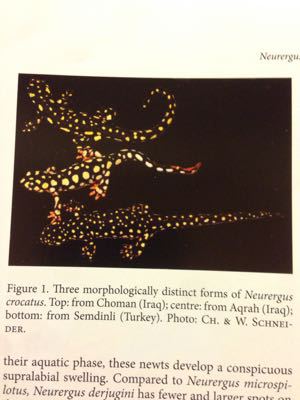Rupert
New member
- Joined
- May 25, 2015
- Messages
- 87
- Reaction score
- 4
- Points
- 0
- Location
- Seoul
- Country
- South Korea
- Display Name
- Rupert
My colleague pointed out that, while he was observing his Triturus Carnifax,
the aquatic newts tended to have a thicker and more pronounced lips(nasolabia?).
I've tried searching for studies related to the difference - with no luck.
We came up with a few hypotheses such as :
1) To help it with feeding via assisting in holding onto prey as they suction-feed in water
2) Sexual/breeding related change, assisting in courtship
3) Secondary sensory organ
4) Secondary respiratory organ
Now, if anyone could illuminate us to the purpose and the significance of enlarged lips
of aquatic newts (we saw this in Triturus and Cynops Pyrrohgaster), it would be very
much appreciated.
And no, this is not about bloating/sick newts. There is nothing out of the ordinary except
a more pronounced lip feature in aquatic forms compared to the terrestrial form.
Any information/pointers in the right source would be very much appreciated.
the aquatic newts tended to have a thicker and more pronounced lips(nasolabia?).
I've tried searching for studies related to the difference - with no luck.
We came up with a few hypotheses such as :
1) To help it with feeding via assisting in holding onto prey as they suction-feed in water
2) Sexual/breeding related change, assisting in courtship
3) Secondary sensory organ
4) Secondary respiratory organ
Now, if anyone could illuminate us to the purpose and the significance of enlarged lips
of aquatic newts (we saw this in Triturus and Cynops Pyrrohgaster), it would be very
much appreciated.
And no, this is not about bloating/sick newts. There is nothing out of the ordinary except
a more pronounced lip feature in aquatic forms compared to the terrestrial form.
Any information/pointers in the right source would be very much appreciated.


